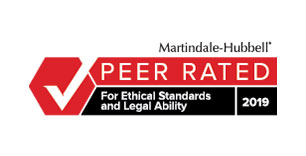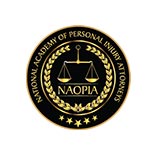If you get into a car accident, suffer from a slip and fall, or become injured while on the job, can you file a personal injury lawsuit to seek financial compensation? Yes, you can. But according to West Virginia’s comparative fault laws, the amount of compensation, or damages, you receive may not be what you expect.
The Prim Law team is available to answer your questions about comparative fault and personal injury cases. Contact our Hurricane, West Virginia, office by calling 304-201-2425 or by filling out an online form.
What is comparative fault?
To understand West Virginia’s comparative fault laws and how they apply to certain scenarios, let’s first discuss what comparative fault is.
Comparative fault, also called comparative negligence, is a legal principle used to assign blame to people involved in an incident based on how much they contributed to said incident. Understanding the fault of each party helps judges or juries award appropriate damages, and helps insurers pay the correct amount in insurance claims.
West Virginia’s comparative fault laws
At-fault vs. no-fault
Like most states in the U.S., West Virginia is a “fault state,” meaning it uses an at-fault system to assign responsibility to each party involved in an incident. In at-fault states, the person at-fault for causing a car accident is liable, or responsible, for damages to other parties.
Other states such as Kansas, Michigan, Pennsylvania and more are “no-fault” states. In no-fault states, your insurance company generally pays for your damages up to a specified limit, regardless of fault.
Modified comparative fault
West Virginia is a modified comparative fault state. This means that each person is liable for their degree of fault.
If you’re in a car accident, for example, and you’re found to be 20% at fault, then you are responsible for that 20 percent of damages. You can still file a lawsuit against the other driver, but the maximum amount of damages you can receive will be lessened by 20 percent. If you sought $100,000 in damages, the most you could be awarded would be $80,000.
Other states may follow pure comparative fault, which means that each party can be responsible for their involvement in an incident, but they can still sue the others and collect damages, no matter how much at-fault they were. California, Florida, New York, and others are pure comparative fault states.
Just five states follow pure contributory negligence law, which means that a person cannot collect any damages if they are found as little as 1 percent at-fault for an incident.
The 50 percent bar rule
How much you are found at fault is important, too. West Virginia follows the 50 percent bar rule.
In West Virginia (along with other states like Colorado, Georgia, Utah, and more) if you are 50 percent or more at-fault for an accident, you are “barred” from collecting damages in a lawsuit. Only if you are less than 50 percent at-fault for an accident can you be awarded compensation, minus your portion of fault.
Other states may follow the 51 percent bar rule, which is similar, but the threshold for fault is set at 51 percent fault instead of 50 percent. States like Hawaii, Massachusetts, Nevada, and Texas follow the 51 percent bar rule.
When proof of fault is not required
Generally, when you file a personal injury lawsuit against another person, you must prove that they were truly at-fault for the harm they caused. In specific injury cases, however, you do not have to prove negligence or fault because of the strict liability standard. Strict liability standard means that proof of fault or negligence is not necessary to hold the other person liable.
Strict liability may apply in the following types of cases:
- Animal bites. An animal owner is generally responsible for any harm that their animal may cause another person. West Virginia’s “One Bite Rule” means that an owner can be held strictly liable if they knew that their animal was likely to attack others.
- Hazardous or dangerous activities. Strict liability can be applied to inherently dangerous or extremely risky activities or conditions, like industrial construction, sites with machinery, or sites prone to fire and explosions.
- Product liability cases. If you are injured or a loved one is killed by a dangerous or defective product, you usually don’t need to prove that the product manufacturer was negligent or at-fault.
Understand fault laws with the help of an attorney
As you can see, understanding West Virginia’s comparative fault and fault laws can be complicated. Certain laws may apply to specific cases, and it can be difficult understanding what you must prove and how your involvement may affect the outcome of a lawsuit.
The Prim Law team is experienced and knowledgeable in a variety of cases involving fault, including auto accidents, premises liability cases, product liability and other personal injury cases. We can help you understand your legal options and build a strong case in your favor.
Speak with an experienced attorney on the Prim Law team today by calling our Hurricane office at 304-201-2425 or by filling out an online contact form. You can also like and follow Prim Law on Facebook for free legal resources and firm updates.



